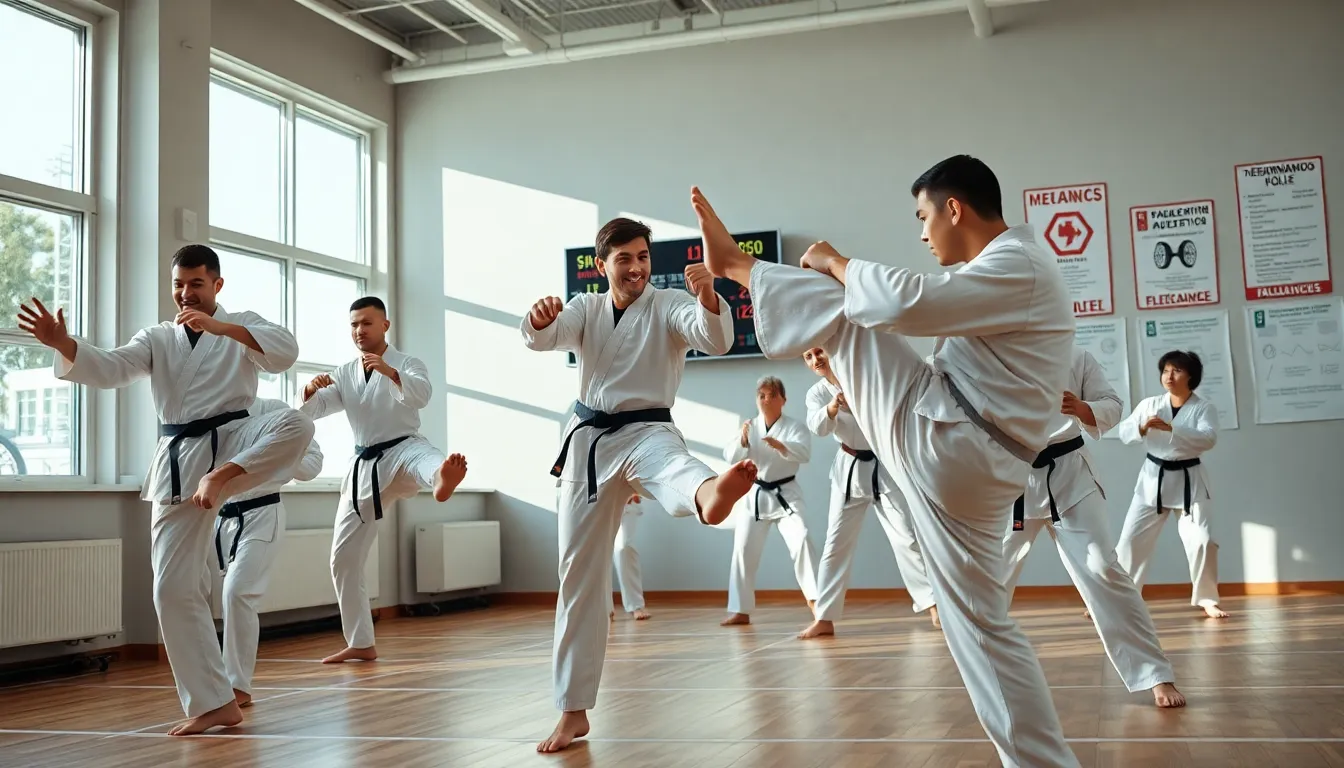Taekwondo fans and participants alike, buckle up. Whether you’re a seasoned fighter or just considering putting on that dobok for the first time, this deep jump into taekwondo bouts promises to knock your socks off, without throwing a single kick. Think of it as your ultimate guide, packed with the latest insights and practical tips that can turn even the most timid enthusiast into a confident competitor. Ready to kick it up a notch? Let’s get started.
Table of Contents
ToggleUnderstanding Taekwondo Rules and Regulations

The foundation of any sport revolves around its rules, and taekwondo is no exception. Understanding these regulations can transform your experience on the mat from confusion to confidence. Taekwondo governs everything from scoring to illegal moves, and athletes must know these like the back of their hand:
- Scoring System: Points are awarded for different types of strikes. A punch to the body gets one point, while a kick to the head can score three points. It’s crucial for competitors to familiarize themselves with how ringside referees score bouts in various competitions.
- Match Duration: Typically, a taekwondo bout lasts for three rounds, each lasting two minutes with a one-minute break in between. Understanding how the timeframe affects strategies is vital.
- Illegal Moves: Certain moves like headbutting or striking below the waist are prohibited. Athletes should be fully aware to avoid penalties that could cost them the match.
Familiarity with these regulations not only prepares athletes for competition but fosters a safer environment for all participants.
Types of Taekwondo Bouts
Taekwondo boasts a variety of bout types, each offering unique challenges and opportunities for growth. Here’s a closer look at the main forms:
1. Sparring
Sparring is perhaps the most recognized format, emphasizing practical application of techniques. This form allows athletes to use permitted techniques against a live opponent, providing a dynamic training environment. Sparring can occur in controlled settings or official competitions, each focusing on strategy and technique refinement.
2. Poomsae
While not a bout in the traditional sense, poomsae competitions are an essential aspect of taekwondo. Athletes perform predetermined patterns of movements to demonstrate their mastery of techniques, precision, and rhythm. Judging focuses on technical execution and speed.
3. Board Breaking
Although considered less conventional, board breaking tests an athlete’s power and technique. Competitors break a series of boards using specific strikes to showcase their skills. Judges assess the appropriateness of the technique and the force applied.
Understanding the nuances among these types can guide competitors in tailoring their preparation and training.
Preparation for Taekwondo Competitions
Preparation is key, not just for the body but the mind too. Here’s how to ensure readiness for competition:
1. Physical Training
Rigorous physical training tops the list. Conditioning plays a significant role in boosting stamina, strength, and flexibility. Runners, cyclists, or swimmer training can complement taekwondo workouts effectively.
2. Mental Training
Mental prep is equally vital. Visualization techniques allow athletes to imagine their success during bouts. Engaging in meditation helps keep nerves at bay, ensuring focus when the competition day arrives.
3. Strategize
Developing a strategy can separate great athletes from the good ones. Analyzing an opponent’s strengths and weaknesses offers an edge, allowing for more calculated decisions during bouts.
4. Nutrition
Proper nutrition can make or break a competitor’s performance. A well-balanced diet rich in carbohydrates, proteins, and essential nutrients fuels the body, while hydration keeps performance at peak levels.
A comprehensive approach to preparation not only instills confidence but also ensures athletes are physically and mentally equipped to handle the rigors of competition.
Techniques and Strategies in Taekwondo Bouts
Techniques are not just about speed: they revolve around strategy as well. Here are some crucial techniques and strategies to keep in check:
1. Kicks
The hallmark of taekwondo, kicks are fast and powerful. High kicks, roundhouse, and sidekicks can be devastating when executed well. Timing plays a crucial role, using feints can create openings in an opponent’s defense.
2. Defense Methods
A solid defense is as important as offense. Athletes must master blocking, parrying, and counterattacks. A well-timed counter can turn the tides of a fight.
3. Distance Management
Understanding distance is paramount. Inevitably, knowing when to close in and when to maintain distance can keep an athlete secure and impose an advantage against the opponent.
4. Combos
Multiple strike combos can confuse opponents and lower their defensive awareness. Athletes should practice combination sequences to improve rapidity while maintaining control.
The blend of technique and strategy builds versatility in a fighter’s game plan, making a well-prepared athlete formidable in competition.
The Role of Sports Psychology in Taekwondo
Mental readiness plays a crucial role in any competitive sport, and taekwondo is no different. Here’s how sports psychology can boost an athlete’s competition performance:
1. Overcoming Anxiety
Nerves before fights are common. Techniques, such as deep breathing and visualizations, can help calm these jitters and allow athletes to focus.
2. Building Confidence
Awareness of past successes fosters confidence. Athletes may benefit from keeping journals detailing personal growth in training to help remind them of their abilities.
3. Motivation Enhancement
Setting specific, measurable goals keeps athletes driven. Regularly assessing progress not only forms motivation but also provides satisfaction through achievement.
4. Focus Techniques
Strategies for maintaining focus during bouts, including mindfulness training, can sharpen concentration. This ensures athletes remain in the present moment, minimizing distractions.
Harnessing the power of sports psychology creates a balanced competitor, rivalling any physical attribute they may possess.
Latest Trends in Taekwondo and Competitive Bouts
Taekwondo, like any sport, evolves. Here’s a glance at some current trends shaping the future of taekwondo and competitive matches:
1. Technology Integration
Wearable technology allows athletes to track their health metrics, providing valuable data for training regimens. Monitoring heart rates, jump heights, and punches adds a data-driven layer to training.
2. Online Training Platforms
The rise of online training sessions helps newcomers access quality instruction from around the globe. Digital platforms assist in reaching a wider audience, breaking traditional barriers of gym access.
3. Inclusivity in Competitions
Efforts to increase inclusivity in taekwondo competitions are intensifying. More tournaments now offer categories for athletes with disabilities, promoting a spirit of inclusion within the sport.
4. Environmentally Sustainable Practices
Growing awareness of environmental issues has taekwondo organizations adopting greener practices, from eco-friendly uniforms to sustainable tournament hosting.
Staying updated with these trends keeps athletes and enthusiasts engaged and prepares them for a bright future in taekwondo.





